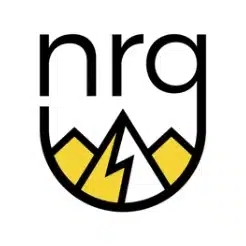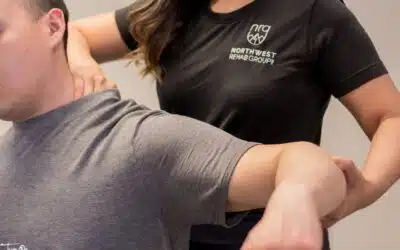Sports-related injuries can be frustrating and debilitating, causing pain, discomfort, and decreased range of motion. One of the most common sports injuries is the tennis elbow, which affects tennis players and athletes in other sports, such as golf, baseball, and weightlifting. Tennis elbow, or lateral epicondylitis, is an overuse injury that affects the tendons on the outer part of the elbow, causing pain and tenderness.
While many people turn to pain medication or rest to treat sports-related injuries, physiotherapy has been shown to be a highly effective treatment option. Physiotherapy is a form of rehabilitation that uses various techniques and exercises to promote healing and recovery from injury or illness. In the case of sports-related injuries, physiotherapy can help athletes get back to their sport as quickly and safely as possible.
This article will explore the benefits of physiotherapy for tennis elbow and other common sports-related injuries. We will look at how physiotherapy can help athletes recover from injuries and prevent future injuries. Whether you are a competitive athlete or a weekend warrior, understanding the benefits of physiotherapy can help you stay healthy and active.
How physiotherapy can help with tennis elbow
Tennis elbow is a type of overuse injury that affects the tendons on the outer part of the elbow, causing pain and tenderness. It is often caused by repetitive motions, such as hitting a backhand in tennis or lifting weights. While rest and pain medication can help relieve symptoms, physiotherapy can be an effective treatment option for tennis elbow.
There are several types of physiotherapy that can be used to treat tennis elbow, including exercise therapy, manual therapy, and electrotherapy. Exercise therapy involves specific exercises targeting the affected area, such as wrist extension and grip-strengthening exercises. Manual therapy involves hands-on techniques, such as massage and stretching, to help relieve pain and improve mobility. Electrotherapy involves the use of electrical stimulation to promote healing and reduce pain.

Each type of physiotherapy offers specific benefits for tennis elbow. Exercise therapy can help strengthen the affected muscles and improve the range of motion. Manual therapy can help reduce pain and inflammation and improve joint mobility. Electrotherapy can help promote healing and reduce pain.
Here are some examples of exercises and techniques that can be used in physiotherapy treatment for tennis elbow:
- Eccentric wrist extension exercises: These exercises involve slowly lowering weight with your wrist, which can help strengthen the affected muscles and reduce pain.
- Massage therapy: Massage can help relieve tension and reduce pain in the affected area.
- Ultrasound therapy: Ultrasound can help promote healing and reduce pain by using sound waves to stimulate blood flow to the affected area.
Overall, physiotherapy can be an effective treatment option for tennis elbow, helping athletes recover from their injury and get back to their sport as quickly and safely as possible. By targeting the affected area with specific exercises and techniques, physiotherapy can help athletes regain strength, reduce pain, and prevent future injuries.
How physiotherapy can help with other common sports-related injuries
Sports-related injuries can range from minor sprains and strains to more serious injuries such as ACL tears. Regardless of the severity of the injury, physiotherapy can be an effective treatment option to help athletes recover and prevent future injuries.
Some of the most common sports-related injuries include:
- Sprains: A sprain occurs when a ligament is stretched or torn, often as a result of a sudden twisting or bending motion. Sprains can be mild, moderate, or severe, affecting various body parts, such as the ankle or knee.
- Strains: A strain is a muscle or tendon injury that can occur as a result of overuse, sudden twisting or pulling, or repetitive motions. Strains can be mild or severe and can affect various parts of the body, such as the back or hamstring.
- ACL tears: An ACL tear is a serious knee injury that occurs when the anterior cruciate ligament (ACL) is torn, often as a result of a sudden twisting or bending motion.
Physiotherapy can be used to treat these injuries by targeting the affected area with specific exercises and techniques. For example:
- For sprains: Physiotherapy may involve exercises to improve strength and stability in the affected joint, as well as techniques such as massage and ultrasound therapy to reduce pain and inflammation.
- For strains: Physiotherapy may involve exercises to improve flexibility and range of motion in the affected muscle or tendon, as well as techniques such as heat therapy and stretching to promote healing.
- For ACL tears: Physiotherapy may involve exercises to improve strength and stability in the affected knee, as well as techniques such as balance training and proprioceptive exercises to prevent future injuries.
Examples of exercises and techniques that can be used in physiotherapy treatment for these injuries include:
- Range of motion exercises: These exercises involve moving the affected joint through its full range of motion to improve flexibility and reduce stiffness.
- Strengthening exercises: These exercises involve targeting the affected muscles with specific movements to improve strength and stability.
- Proprioceptive exercises: These exercises involve training the body to recognize and respond to changes in balance and joint position, which can help prevent future injuries.
Overall, physiotherapy can be a highly effective treatment option for common sports-related injuries, helping athletes recover from their injuries and prevent future injuries. By targeting the affected area with specific exercises and techniques, physiotherapy can help athletes regain strength, flexibility, and range of motion and reduce pain and inflammation.

The benefits of physiotherapy for athletes
Physiotherapy can provide many benefits for athletes beyond just treating injuries. By incorporating physiotherapy into their training regimen, athletes can prevent injuries and recover from injuries faster and more effectively.
- Preventing injuries: Physiotherapy can help athletes prevent injuries in the first place by identifying and addressing areas of weakness or imbalance in the body. By correcting these issues through targeted exercises and techniques, physiotherapy can help athletes improve their overall strength, flexibility, and range of motion, reducing their risk of injury.
- Recovering from injuries: If an athlete does sustain an injury, physiotherapy can help them recover faster and more effectively. By targeting the affected area with specific exercises and techniques, physiotherapy can help athletes regain strength, flexibility, and range of motion and reduce pain and inflammation.
- Improved performance: In addition to preventing and treating injuries, physiotherapy can also help athletes improve their performance. By improving their overall strength, flexibility, and range of motion, athletes can perform better and more efficiently, reducing their risk of future injuries.
There are many examples of professional athletes who have benefited from physiotherapy. For example, Tiger Woods has used physiotherapy to recover from various injuries, including knee and back injuries. Serena Williams has also used physiotherapy to recover from injuries and improve her overall performance on the tennis court. Many other professional athletes, from basketball players to soccer players, have also incorporated physiotherapy into their training regimens to stay healthy and perform at their best.
Overall, physiotherapy can provide many benefits for athletes, helping them prevent injuries, recover from injuries faster and more effectively, and improve their overall performance. By working with a qualified physiotherapist, athletes can develop a customized treatment plan that addresses their specific needs and goals, helping them stay healthy and active for years to come.
Conclusion
In conclusion, physiotherapy can be a highly effective treatment option for athletes with tennis elbow and other common sports-related injuries. By targeting the affected area with specific exercises and techniques, physiotherapy can help athletes recover from their injuries faster and more effectively and prevent future injuries.
Whether you are a professional athlete or a weekend warrior, understanding the benefits of physiotherapy can help you stay healthy and active. By working with a qualified physiotherapist, you can develop a customized treatment plan that addresses your specific needs and goals, helping you recover from your injury and improve your overall performance.
If you are struggling with a sports-related injury, we encourage you to consider seeking physiotherapy treatment. With the right treatment plan, you can get back to your sport as quickly and safely as possible and enjoy all the benefits that come with staying active and healthy.
References to verify the claims made in the article:
Kjaer P, Kongsgaard M, Aagaard P, et al. Corticosteroid injections, eccentric decline squat training and heavy slow resistance training in patellar tendinopathy. Scand J Med Sci Sports. 2010;20(6):e35-e45
Bisset L, Coombes B, Vicenzino B. Tennis elbow. BMJ. 2015;350:h1561.
Haake M, Buch M, Schoellner C, et al. Extracorporeal shockwave therapy for tennis elbow. Clin Orthop Relat Res. 2002;(398):198-205.
Drouin JL, Valovich-McLeod TC, Shultz SJ, Gansneder BM, Perrin DH. Reliability and validity of the Biodex system 3 pro isokinetic dynamometer velocity, torque and position measurements. Eur J Appl Physiol. 2004;91(1):22-29.
National Institute of Arthritis and Musculoskeletal and Skin Diseases. Sprains and Strains. Updated September 2019. Accessed March 4, 2023.
Shelbourne KD, Wilckens JH, Mollabashy A, De Carlo M. Arthrofibrosis in acute anterior cruciate ligament reconstruction. The effect of timing of reconstruction and rehabilitation. Am J Sports Med. 1991;19(4):332-336.
Brown E. The benefits of physiotherapy for athletes. Physiopedia. Published March 1, 2018. Accessed March 4, 2023.
Serner A, Weir A, Tol JL, Jarraya M, de Vos RJ. Characteristics of acute groin injuries in the adductor muscles: a scoping review. Br J Sports Med. 2016;50(12):776-781.
Ferber R, Bolgla L, Earl-Boehm JE, Emery C, Hamstra-Wright K. Strengthening of the hip and core versus knee muscles for the treatment of patellofemoral pain: a multicenter randomized controlled trial. J Athl Train. 2015;50(4):366-377.






0 Comments